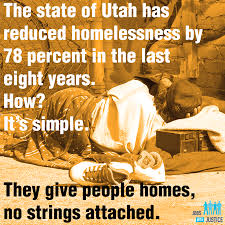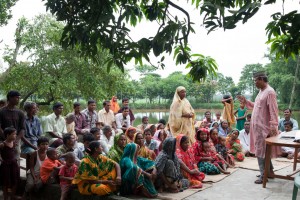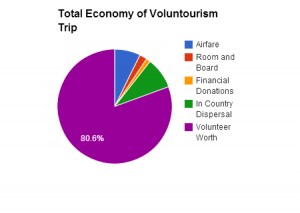I am one of millions of people whose life has been touched by somebody with an autism spectrum disorder (ASD). I work with individuals who have autism, both children and adults, mostly in their homes and out in the community. On a regular basis when I am with my clients, we are stared at, and occasionally have been confronted in regards to certain behaviors, such as making loud noises, jumping up and down, pacing back and forth in line and accidentally nudging into others, etc. Most of the time, however, I receive a warm smile or knowing glances from others in the  community–which is truly a testament to how far the autism awareness movement has come to date. The outside world can quickly become over-stimulating for a person with ASD, which at times leads to a public meltdown. Occasionally, these meltdowns involve physical aggression of some sort (from slapping or pinching to hitting, etc.). When this happens, I become immediately anxious- not anxious out of concern for myself, as I have been trained for safety in incidents like these. I become concerned as to how this looks to the people around. I worry that people will begin to crowd around us (fairly common), which inevitably enhances the severity of the meltdown. I worry, like so many others who care for individuals with autism, that a concerned citizen will think there is a danger being posed, call law enforcement, and that police will arrive and perhaps not recognize the signs of autism and respond in such a way that, unknowingly and unintentionally, escalates the situation further. I understand that law enforcement follows a specific protocol for responses, but I worry that if these responses are used on a person with ASD, they could fight back, flee, or be seriously injured in the case of a restraint situation.
community–which is truly a testament to how far the autism awareness movement has come to date. The outside world can quickly become over-stimulating for a person with ASD, which at times leads to a public meltdown. Occasionally, these meltdowns involve physical aggression of some sort (from slapping or pinching to hitting, etc.). When this happens, I become immediately anxious- not anxious out of concern for myself, as I have been trained for safety in incidents like these. I become concerned as to how this looks to the people around. I worry that people will begin to crowd around us (fairly common), which inevitably enhances the severity of the meltdown. I worry, like so many others who care for individuals with autism, that a concerned citizen will think there is a danger being posed, call law enforcement, and that police will arrive and perhaps not recognize the signs of autism and respond in such a way that, unknowingly and unintentionally, escalates the situation further. I understand that law enforcement follows a specific protocol for responses, but I worry that if these responses are used on a person with ASD, they could fight back, flee, or be seriously injured in the case of a restraint situation.
Of course, all individuals with autism have unique “triggers”, just as every person does. Consequently, is important to remember that generalizations of the signs of autism will always have exceptions. All individuals are at different places on the spectrum and exhibit unique behaviors. In general, however, people who are on the autism spectrum may not make eye contact with others or respond to verbal communication (many individuals on the spectrum are nonverbal), including demands from law enforcement or other authorities. They may also have sensitivities to light, touch, sounds, and so on. People with autism may flee if confronted, for a variety of reasons. These and other Continue reading

 time spans as well as using these experiences on a 3 dimensional level where they can form a web-like data and inter-relate it to arrive to a conclusion. Women accomplish all of this in the same time frame as men. Basically, women come to a more realistic and reliable decision based on instincts and prior knowledge.
time spans as well as using these experiences on a 3 dimensional level where they can form a web-like data and inter-relate it to arrive to a conclusion. Women accomplish all of this in the same time frame as men. Basically, women come to a more realistic and reliable decision based on instincts and prior knowledge. was no universe-shattering solution which defies the laws of economics, it was simple arithmetic. Legislators discovered that the annual cost of ER and jail visits cost almost $17,000/year per person while providing the same with an apartment and a social worker cost merely $11,000. Consequently, Utah began giving the homeless apartments and a case manager with no strings attached and the results are self-evident.
was no universe-shattering solution which defies the laws of economics, it was simple arithmetic. Legislators discovered that the annual cost of ER and jail visits cost almost $17,000/year per person while providing the same with an apartment and a social worker cost merely $11,000. Consequently, Utah began giving the homeless apartments and a case manager with no strings attached and the results are self-evident. and those creating volunteer opportunities to be mindful of the approaches and opportunities being created. To create bridging social capital requires a diversity sometimes not seen in volunteer opportunities as the very nature of an opportunity draws like minded people from similar backgrounds and resources. For instance, neighborhood or playground clean-ups draws individuals from the neighborhood together and, of course, generates social capital, however does not necessarily expand the cultural, professional, or geographic boundaries of the participants.
and those creating volunteer opportunities to be mindful of the approaches and opportunities being created. To create bridging social capital requires a diversity sometimes not seen in volunteer opportunities as the very nature of an opportunity draws like minded people from similar backgrounds and resources. For instance, neighborhood or playground clean-ups draws individuals from the neighborhood together and, of course, generates social capital, however does not necessarily expand the cultural, professional, or geographic boundaries of the participants. just written in the past week or so on a variety of topics:
just written in the past week or so on a variety of topics:  This is, of course, beneficial for war correspondents, as, naturally, they are considerably safer if they do not venture into dangerous areas. But what does this mean for news from Syria?
This is, of course, beneficial for war correspondents, as, naturally, they are considerably safer if they do not venture into dangerous areas. But what does this mean for news from Syria?  adoption process. While unaccredited individuals may continue to assist people in their intercountry, adoptions, they must be supervised by an accredited agency while overseeing a case. This legislation will also require that all families or individuals must receive a certain amount of educational hours before travelling to bring their child back to the US and that all parties involved must be specifically concerned with the best interest of the child. This is a huge step forward for the adoption process! Essentially these agencies are ensuring individuals interested in adoption that they are complying with the
adoption process. While unaccredited individuals may continue to assist people in their intercountry, adoptions, they must be supervised by an accredited agency while overseeing a case. This legislation will also require that all families or individuals must receive a certain amount of educational hours before travelling to bring their child back to the US and that all parties involved must be specifically concerned with the best interest of the child. This is a huge step forward for the adoption process! Essentially these agencies are ensuring individuals interested in adoption that they are complying with the country a hundred percent
country a hundred percent  archeology, and construction to conservation, organic farming, and education, the conscious traveler can now find an abundance of opportunities to participate globally.
archeology, and construction to conservation, organic farming, and education, the conscious traveler can now find an abundance of opportunities to participate globally.  contacted local organizations at my destinations of interest and inquired about their need or desire for volunteers. In my case, luckily, both grassroots organizations,
contacted local organizations at my destinations of interest and inquired about their need or desire for volunteers. In my case, luckily, both grassroots organizations, 
